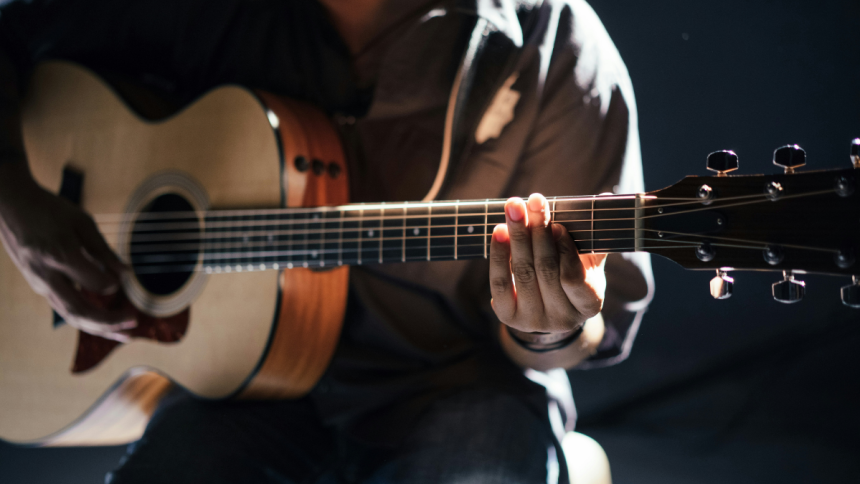In a world filled with screens and instant gratification, cultivating a genuine love for learning can feel like an uphill climb. However, two timeless tools have consistently helped people unlock their curiosity and creativity: music and reading. On their own, each has the power to inspire. Together, expert Benjy Grinberg points out that they form a dynamic duo that can shape minds, foster empathy, and inspire lifelong learners. Whether it’s through a powerful lyric or a page-turning story, the marriage of melody and language does more than entertain; it helps us find our voices and connect with the world around us.
The Brain’s Love Affair with Music and Storytelling
The connection between music and reading is rooted in the way the brain works. Both activities stimulate similar neural pathways involved in memory, language, emotion, and comprehension. When you read a gripping novel or listen to your favorite song, your brain lights up, making associations, predicting what comes next, and interpreting meaning.
Early literacy experts have long encouraged singing as a pre-reading activity for young children. Rhyming songs and nursery rhymes help kids recognize phonemic patterns, develop vocabulary, and understand narrative structure. And it doesn’t stop there. Older students who study music often outperform their peers in reading and writing. That’s because musical training sharpens auditory processing, boosts working memory, and fosters better attention skills; all crucial for reading comprehension.
Music Teaches Rhythm, Reading Brings Depth
One of the most beautiful aspects of pairing music with reading is how they complement each other. Music teaches rhythm, timing, and emotional nuance. It makes learning feel alive and immediate. Reading, on the other hand, invites introspection, builds critical thinking, and encourages deep focus.
Imagine a classroom where students read poetry and then write their own verses set to music. Or a book club where participants explore novels that inspired famous musicals. By engaging different senses and learning styles, this fusion approach invites learners of all kinds, auditory, visual, and kinesthetic, to participate more fully.
Even outside of structured education, this combination works wonders. Think of a teen who struggles with classic literature but finds a gateway through lyrics by Kendrick Lamar or Taylor Swift. Song lyrics are poetry in disguise, offering modern-day access to themes such as love, justice, loss, and growth. When paired with reading, they deepen understanding and spark meaningful discussions.
Empathy and Emotional Intelligence Take Center Stage
Both music and reading are deeply emotional experiences. A novel can place you inside someone else’s life; a song can make you feel seen in an instant. When used together, they foster emotional intelligence and build empathy, two qualities essential for lifelong learners.
Research shows that reading fiction improves our ability to understand other people’s thoughts and feelings. Meanwhile, music taps into raw emotion, helping listeners identify and express what they’re going through. When learners connect with characters in books and then relate those stories to songs that evoke similar emotions, they don’t just absorb information; they feel it.
For children and teens, especially, this emotional layer can be transformative. A middle-schooler navigating anxiety might find comfort in both a young adult novel about mental health and a pop ballad that explores similar struggles. This kind of connection doesn’t just help them learn. It helps them feel less alone.
Creating Rituals That Blend Reading and Music
For families, teachers, and anyone working with young minds, incorporating music into reading routines can be both simple and powerful. Start with read-aloud sessions that include musical interludes or background scores to set the mood. Create playlists that align with the themes of the books being read. Ask learners to write their own lyrics or soundtrack for a story they love.
Educators can further develop this by creating cross-curricular projects that connect literature with music history or songwriting. Reading about the civil rights movement? Pair it with the music of Sam Cooke, Nina Simone, or Bob Dylan. Studying Shakespeare? Explore how his plays have inspired countless songs and operas.
Even in adult life, pairing reading with music can enhance retention and enjoyment. Whether you’re diving into a biography of your favorite artist or curating a playlist to match your current novel, Benjy Grinberg says that the fusion of these media enriches the overall experience. It also keeps the brain engaged in complex, rewarding ways, fueling that thirst for learning well into adulthood.
Finding Your Own Learning Style Through Sound and Story
Not every learner thrives in a traditional setting. Some people are natural readers, while others connect more through sound. However, when you combine music and reading, you open up more pathways for understanding and expression. This kind of flexibility helps learners discover how they best absorb information.
For example, audiobooks set to ambient music can make long texts more approachable for reluctant readers. Songwriting journals can motivate students who don’t like traditional essays. Even background music while reading can enhance focus and immersion for some learners. The key is to encourage experimentation and curiosity, not just about the subject matter, but about how each individual learns best.
In the process, learners begin to discover their voice, not just in terms of self-expression, but in terms of identity. They begin to see how ideas connect, how feelings can be expressed through words or sounds, and how they, too, can contribute something meaningful to the world.
Final Thoughts: A Harmony That Lasts a Lifetime
At the heart of every lifelong learner is a sense of wonder; a desire to keep exploring, connecting, and growing. Music and reading fuel that wonder in powerful and lasting ways. They teach us to listen closely, to think deeply, and to speak from the heart. By blending the rhythm of a song with the depth of a story, we create learners who are not only knowledgeable but also compassionate, creative, and resilient. In a world that needs more understanding and inspiration, this harmony is one worth playing on repeat.
Lynn Martelli is an editor at Readability. She received her MFA in Creative Writing from Antioch University and has worked as an editor for over 10 years. Lynn has edited a wide variety of books, including fiction, non-fiction, memoirs, and more. In her free time, Lynn enjoys reading, writing, and spending time with her family and friends.















